I’ve never been a huge fan of the term “gravel”, as applied to bikes. I can see the need for a term to describe machines that sit somewhere between cyclocross and tourers, but it’s always been infuriatingly imprecise. A gravel bike, as defined by the bike industry, can mean anything from a tweaked CX bike that’s designed to be ridden as fast as possible, to a steady rolling terrain crusher that’s basically a mountain bike with drop bars. Both could be pretty great bikes, but not if you asked them to do something the other was good at. The risk is that your versatile do-it-all drop bar bike might end up being ideally suited to just one purpose – the cycling equivalent of one of those kitchen gadgets that clutter up your drawers and only become useful when you want to hull a strawberry.
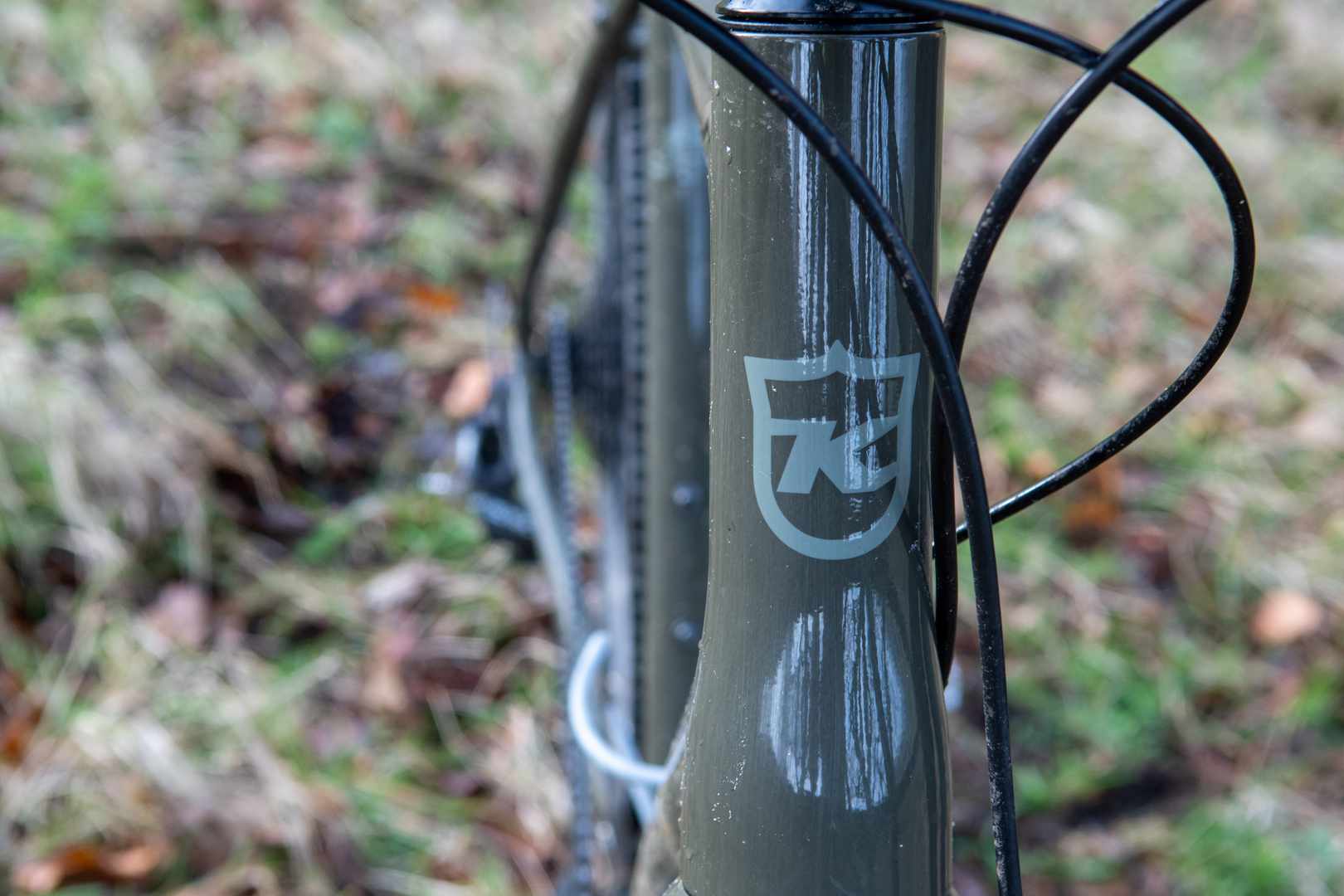
Kona seems to agree with this worldview, and with the Libre they’ve tried to cram a few different bikes into a blender, to make something that oozes fluidly between pigeonholes. Is it a speedy, head-down racing machine? The Libre AL’s posher sibling, the Libre DL, definitely has inclinations that way, sporting a carbon frame and a sub-20lb weight. And the Libre AL still has a fair dash of road bike in its genes, with its modest mass, carbon fork and narrow Q-factor. But it also sports the long head tube of a stately tourer, and enough bottle and luggage mounts to put many long-haul bikepacking rigs to shame. Is it a Swiss army knife, or a salad spinner?
The Bike
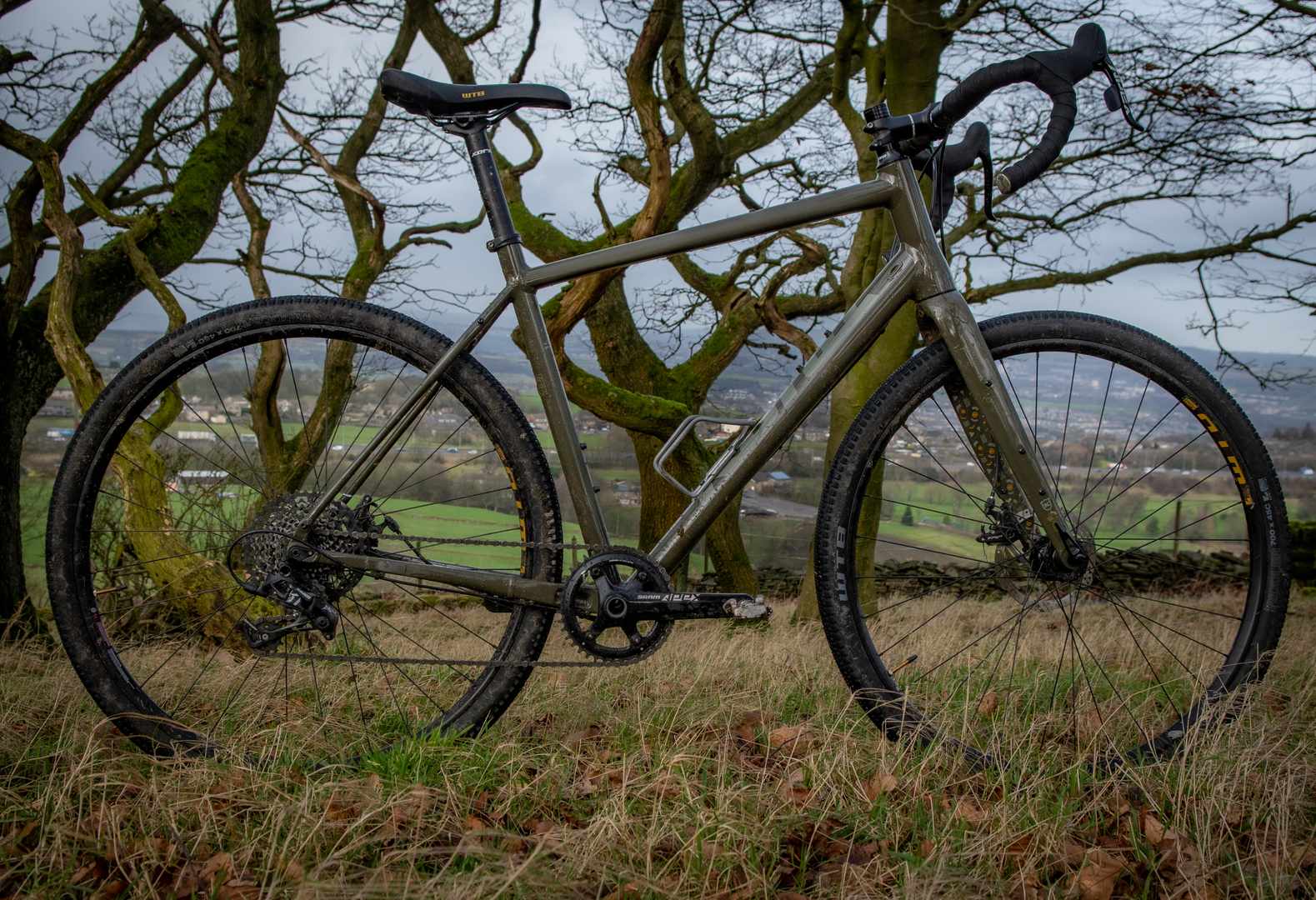
For the Libre AL, Kona has embraced the army surplus aesthetic that’s doing the rounds of bike companies at the moment. It looks like it’s designed to blend into a natural landscape – a pain if you’re photographing it for a bike review, but in general, not a bad aspiration.The graphics are subtle to the point of stealthy, which again isn’t a bad thing in my book, and I particularly like the decals on the inside of the fork legs. It’s a bit like those sensible business suits which have a natty patterned lining. You know it’s there, and that’s what counts.
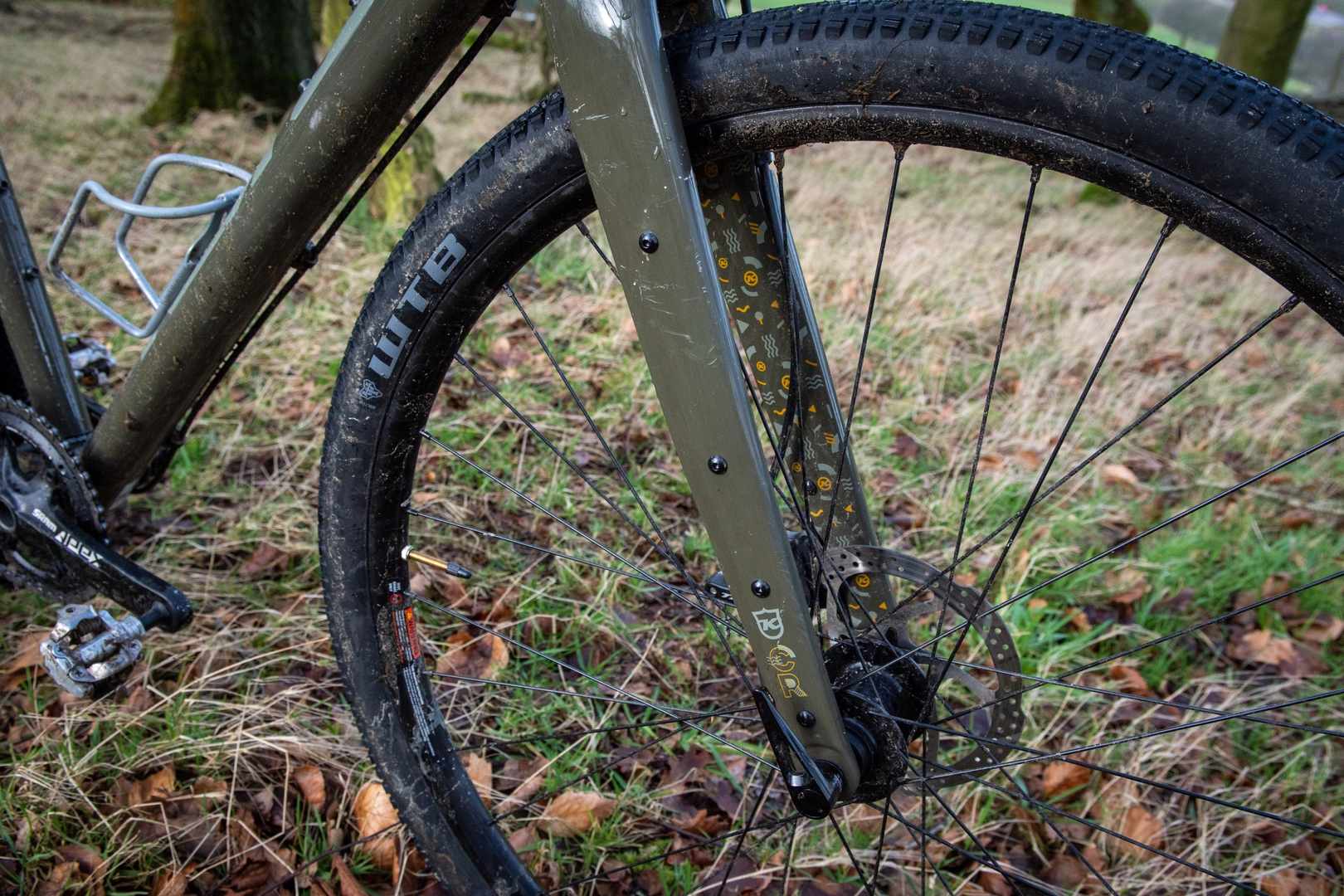
The Libre AL gets the same geometry as its carbon counterparts. There’s a slight variation in the geo depending on what size you pick, but our 54cm test bike has a 71 degree head angle, and a 72.5 degree seat angle. So far, so standard, but the Libre range all have a tall old stack height and a stretched-out top tube. As a result, Kona’s sizing for the Libre AL is a bit odd. Their website gives sizes using the traditional seat tube measurement, but thanks to the long reach, you’ll probably want to go down a size from your usual.
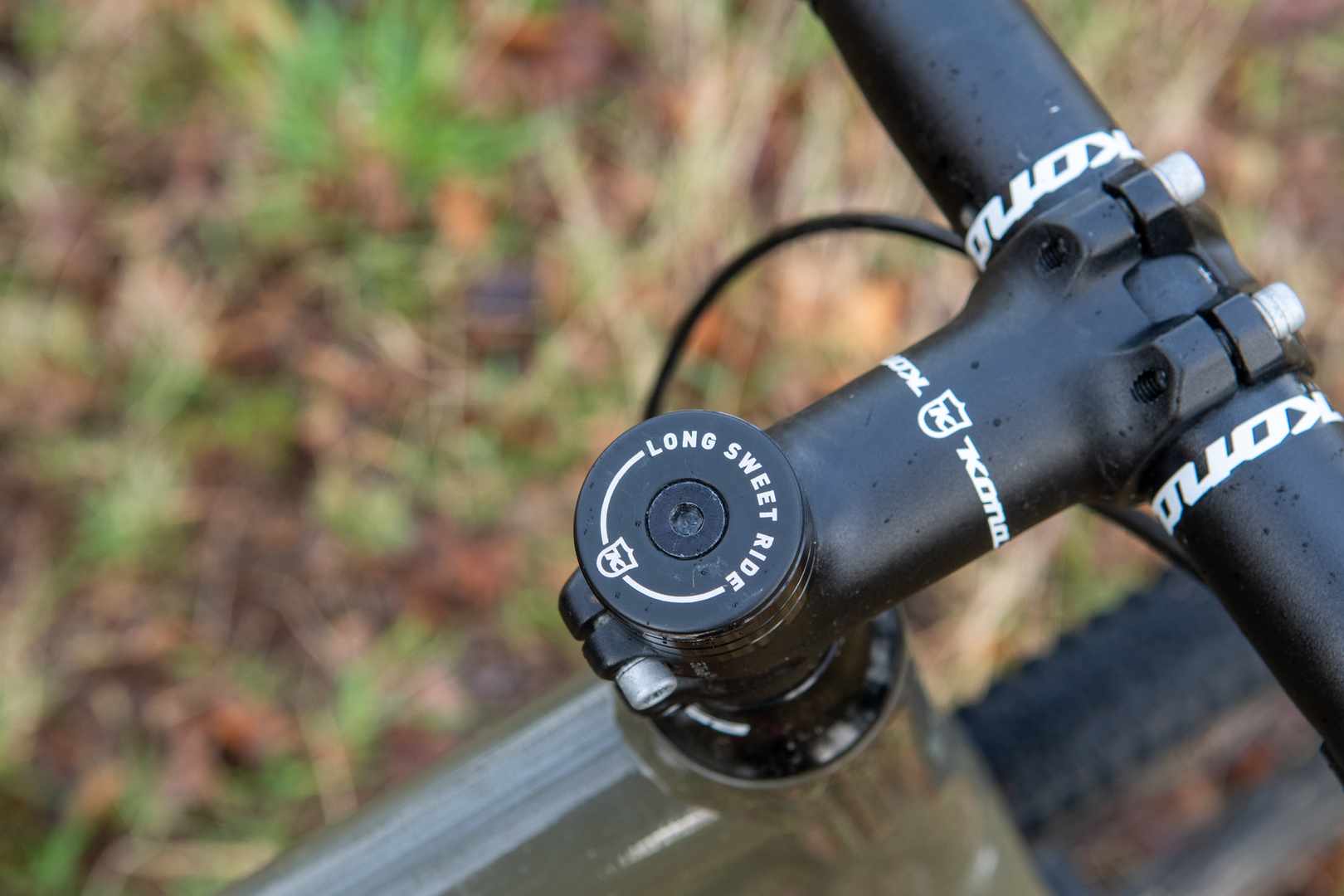
The Libre AL’s frame has a bit more going on than most alloy bikes, with tube profiles that range in diameter from its beefy drink can down tube to its almost pencil-thickness stays. The top tube has a flattened underside which should be good when you need to shoulder the bike, as well as making for a stable interface with a frame bag. There’s a slightly random mix of internal and external cable routing, and unlike the carbon version of the bike, no provision for a dropper post, although I don’t actually know anyone who’s using one on their gravel bike yet. The rear triangle has ample clearance for the 45mm tyres, and terminates in neat relieved through-axle dropouts which house a flat brake mount.
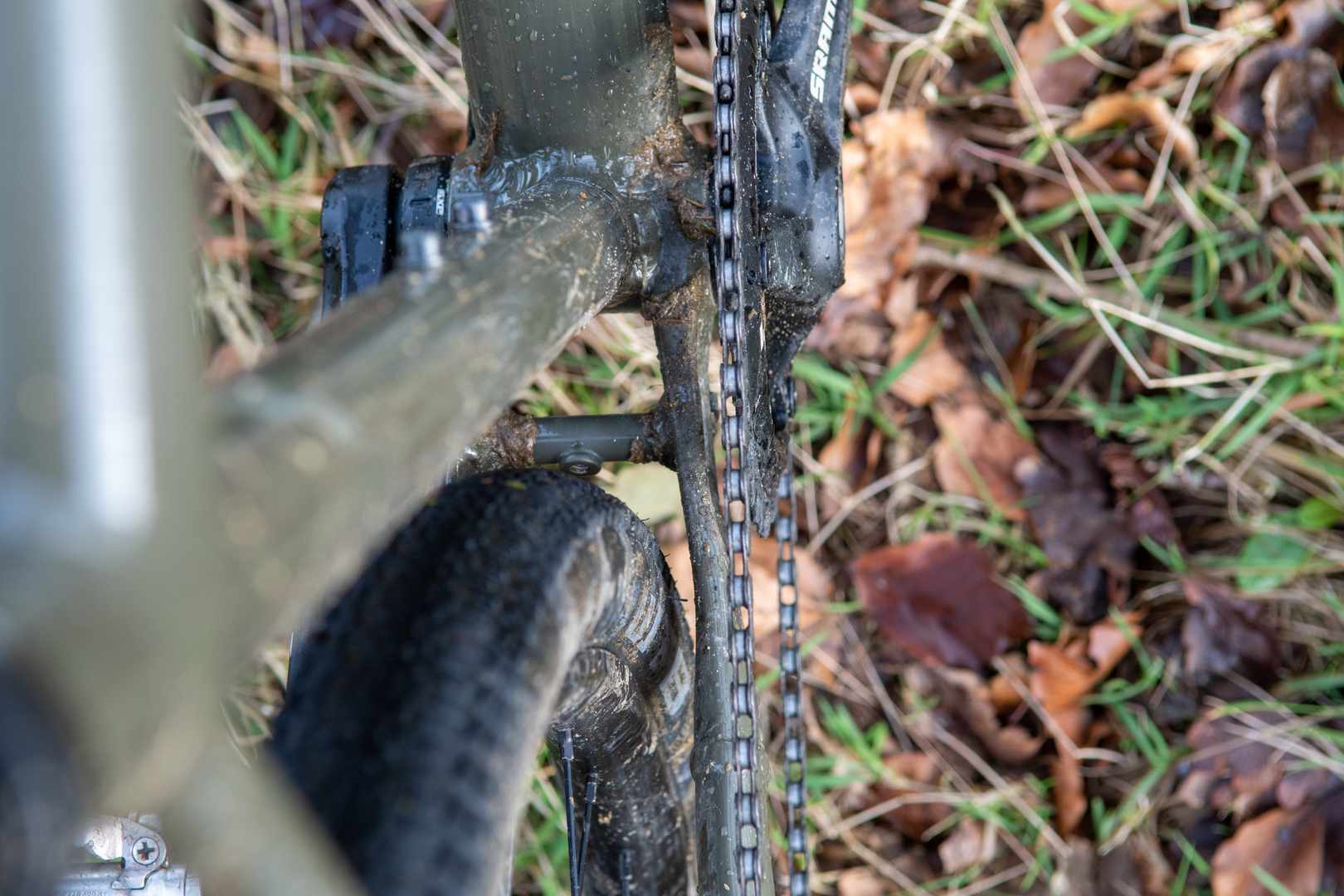
Luggage-carrying credentials are firmly on show thanks to the multiplicity of mounts that pepper the frame and forks. You get double down tube bottle cage mounts (the upper one of which would work well as an anchor point for a custom frame bag), a top tube “bento box” mount, and front and rear rack and fender mounts. The Kona Verso carbon fork also has triple bolts for a cargo cage, although these don’t appear to be compatible with some brands of cage, such as Salsa’s Anything Cage, as they’re not evenly spaced. We’re told the Blackburn cages will fit, however. Kona has used low-profile bolts on some of these mounts, so the Libre AL’s frame doesn’t end up looking as much like a wind instrument as some of its ilk.
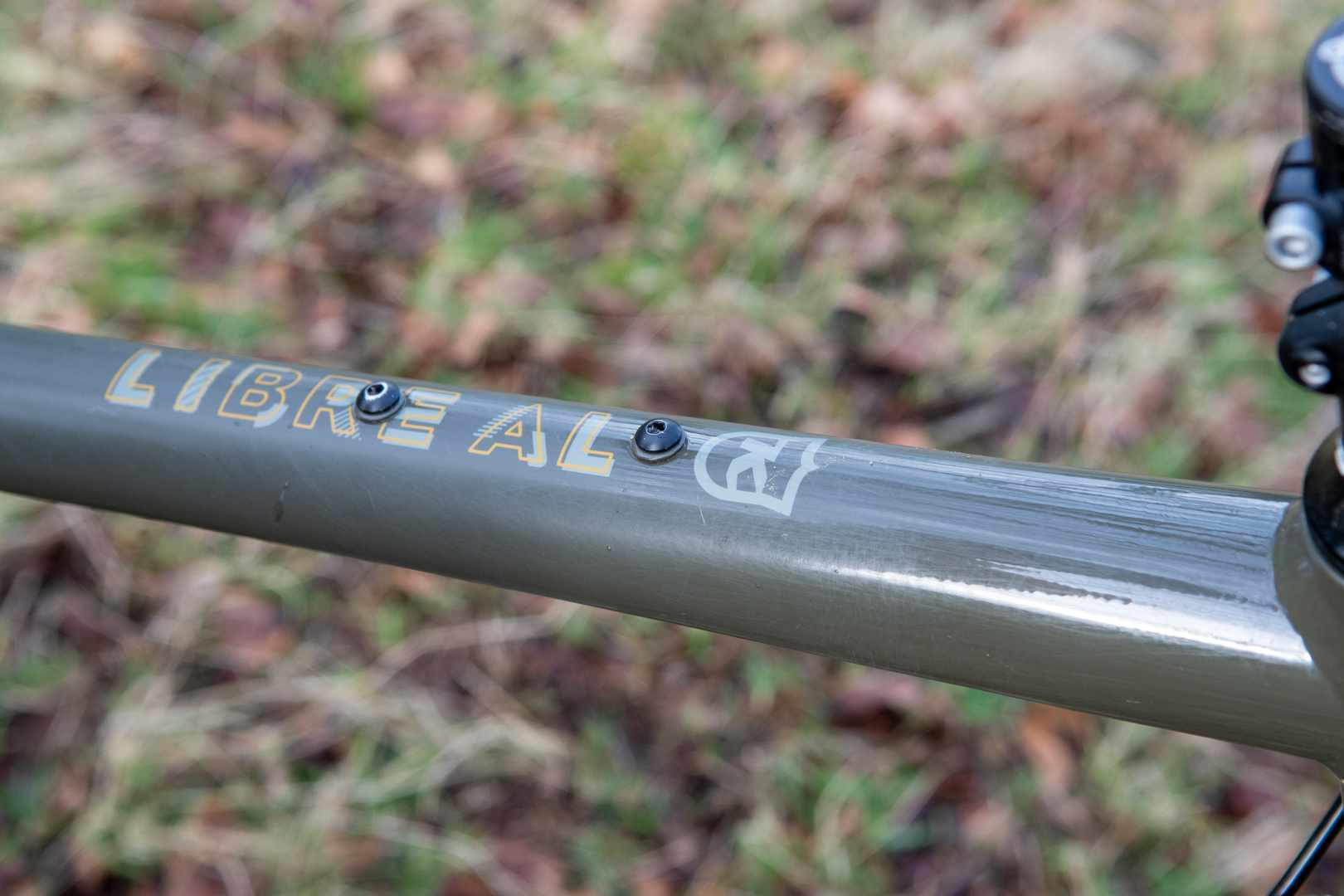
The kit attached to the frame is unspectacular but decent stuff. SRAM’s Apex groupset is the 1×11 gravel drivetrain of choice at the more affordable end of the market, and in my experience it’s user-friendly and dependable. It’s also plugged in to a threaded BB shell. Kona has paired SRAM’s levers with TRP’s Spyre C mechanical disc brakes, a choice that will disappoint some riders looking for the better feel and power that hydraulic discs provide. The trade-off is that mechanical brakes won’t start leaking in the back of beyond, and it’s worth noting that Kona’s other gravel and adventure bikes tend to come with them as well.
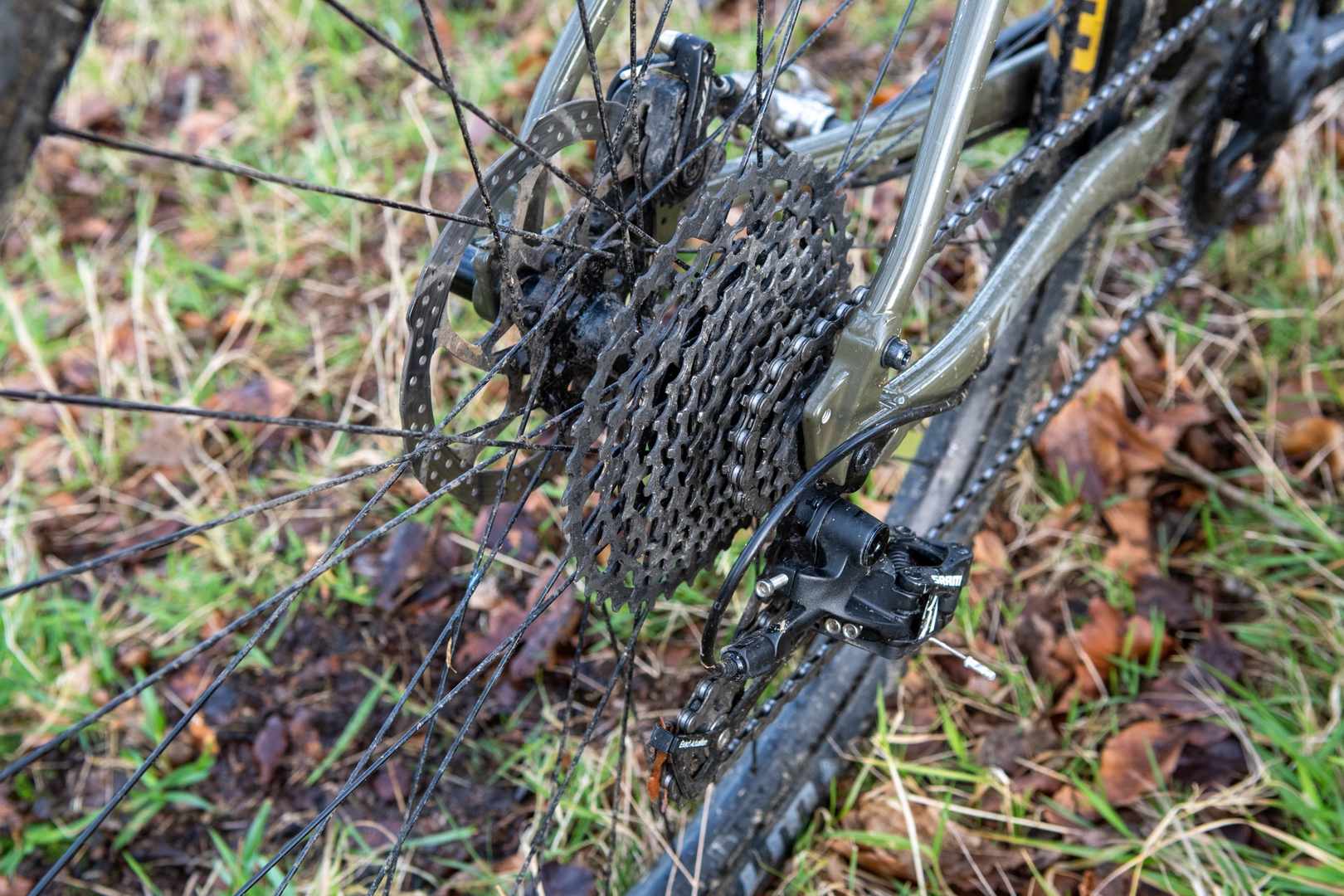
The wheels feature unbranded black hubs laced to WTB KOM i25 tubeless rims. These are a lot wider than your standard road or CX rim, which means a wider tyre profile, which means more grip and comfort. There are thru-axles at both ends, with a neat design akin to DT Swiss’s system, where you can position the lever exactly where you want just by pulling it away from the hub.
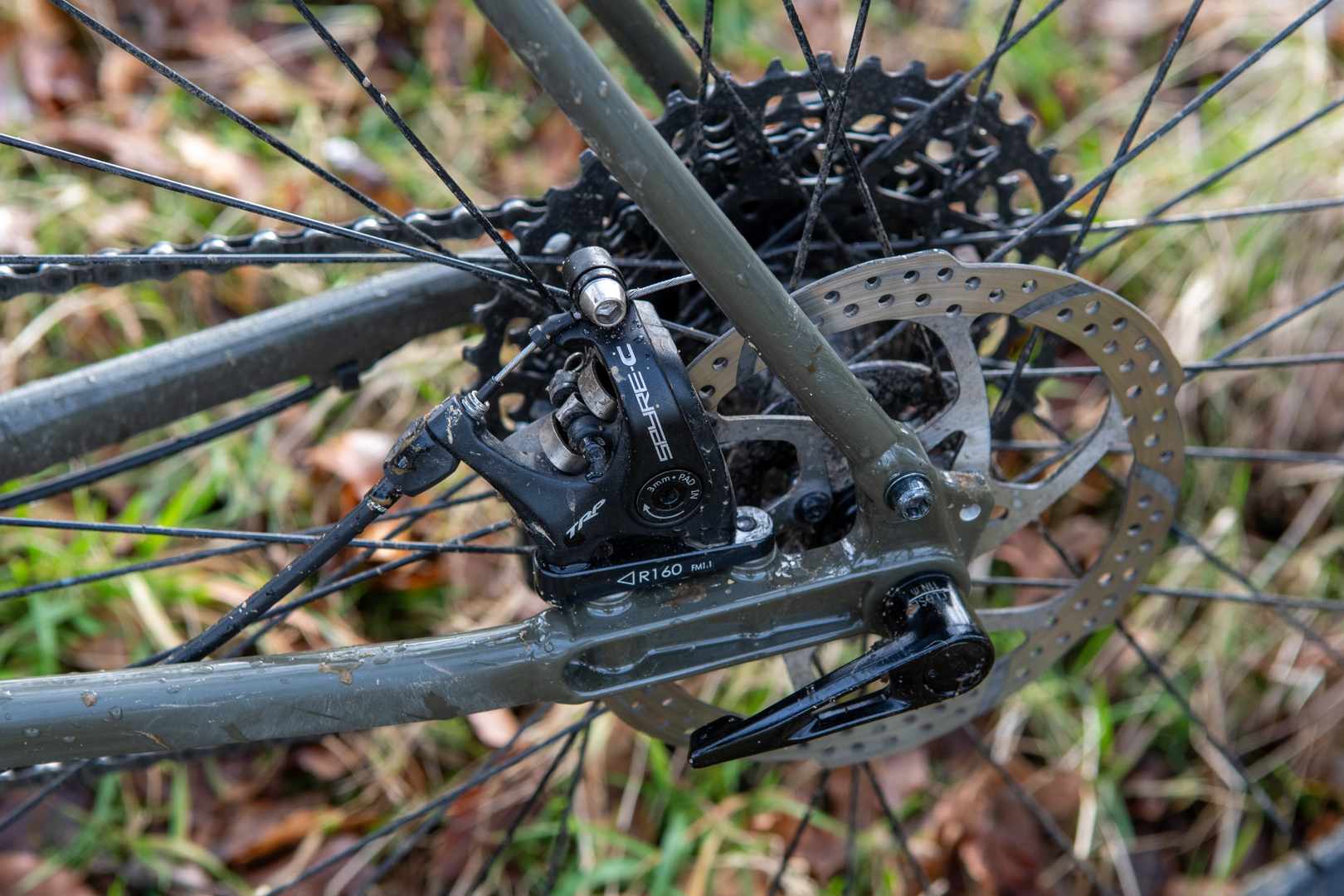
The WTB Riddler 700c tyres are here in their fattest 45mm incarnation, and have a low-profile centre with a knobbly edge. Normally WTB’s tubeless tyres and rims play nicely together, but in this case I found them a bit temperamental to set up. Once seated though they held air well, and as previously mentioned, the wide rims give them a reassuringly chunky profile.
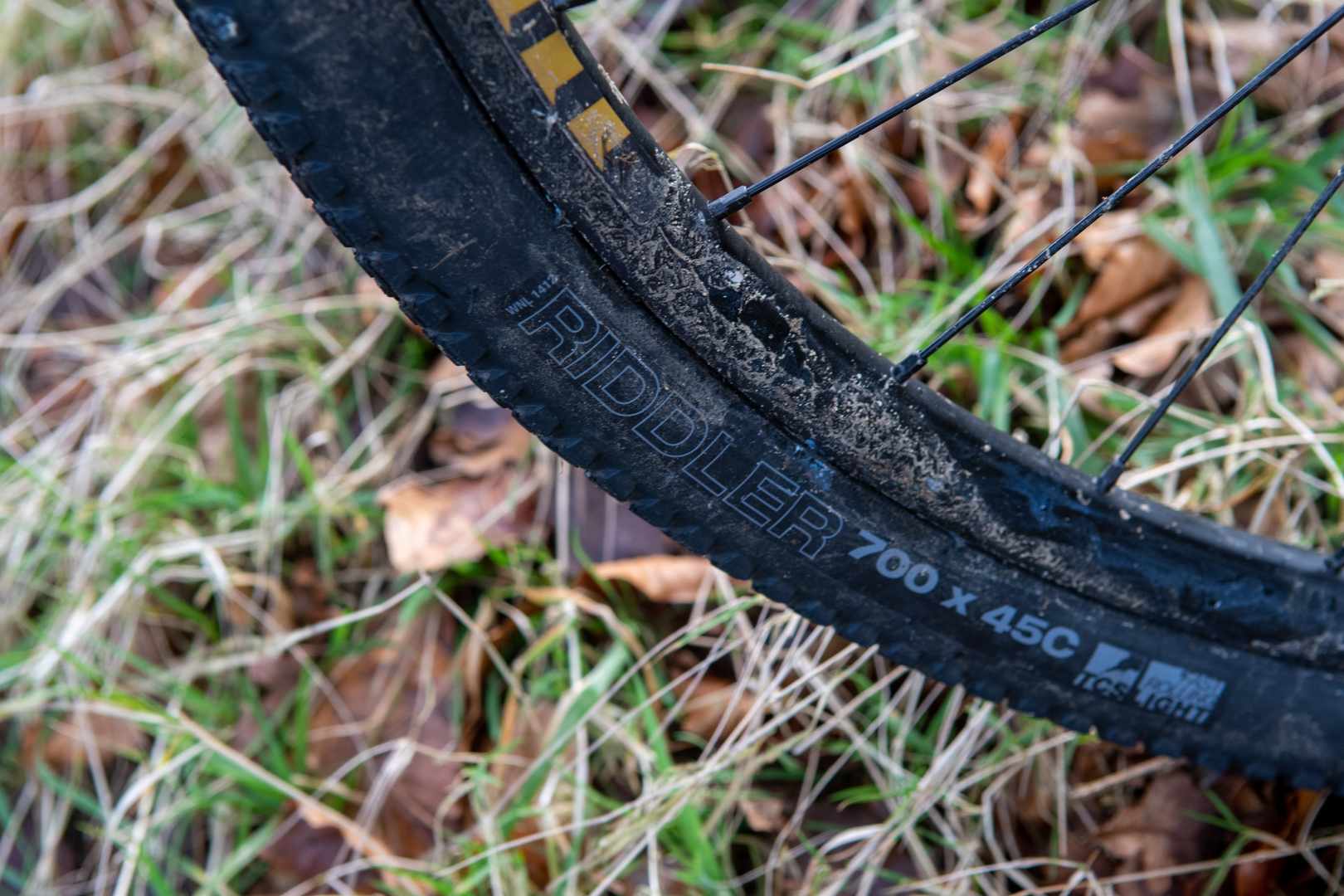
The Libre AL relies heavily on own-brand finishing kit, but again it’s nothing that spoils the bike. A short 80mm stem helps offset that rangy top tube length. The Kona Road handlebars are actually nothing of the sort, considering they’re an impressive 48cm wide, and also have a slight flare for extra control – think along the lines of Salsa’s Cowbell bars if you want a rough comparison. It’s nice to see bars like this on complete bikes as they can be an expensive upgrade.
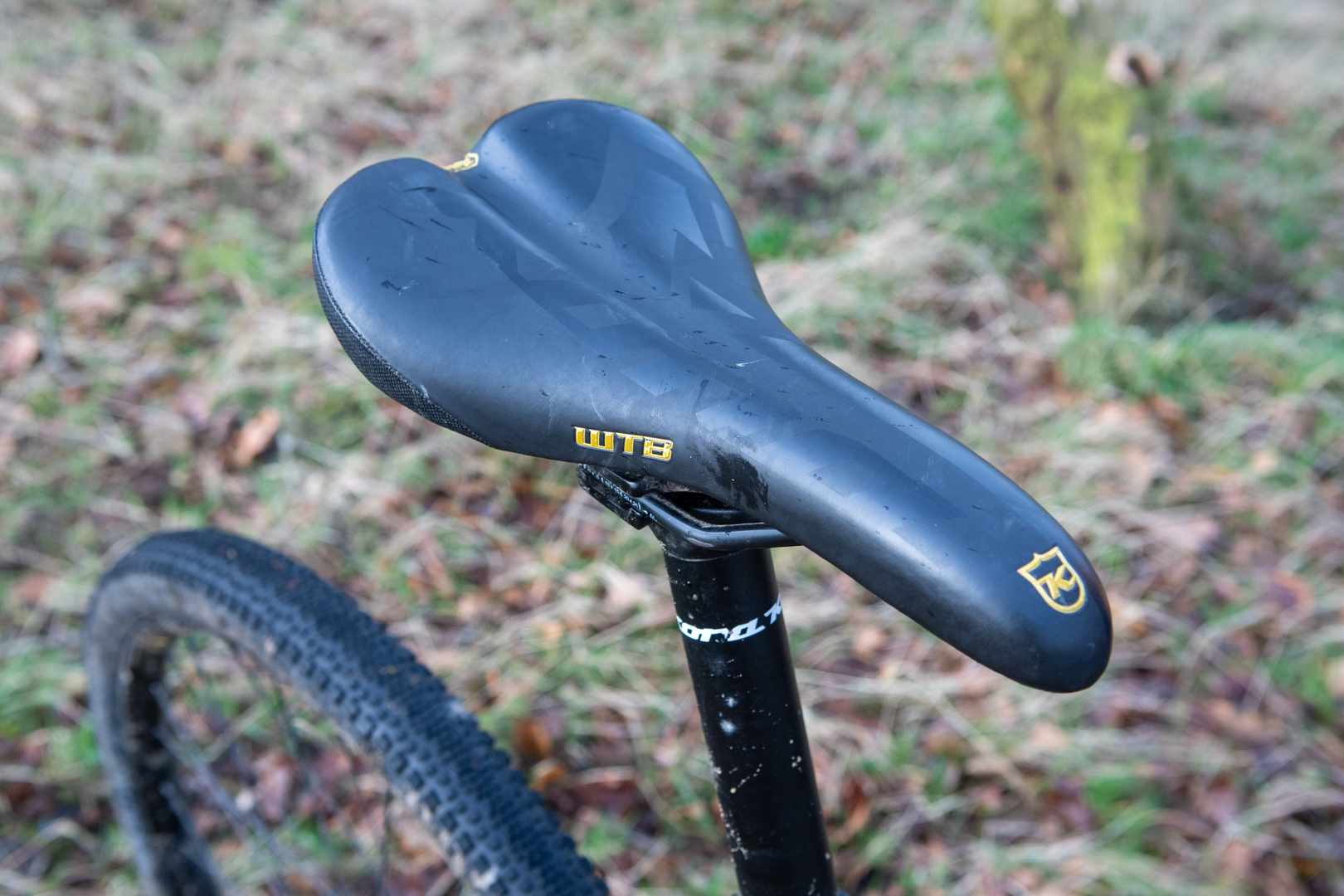
One slight let-down with our test bike was that it seemed to be a bit of a rushed build, with a slightly short rear brake cable. The cables are also clipped on to the bike rather than being zip-tied, which is a touch less secure, but not a difficult thing to fix.
The Ride
The Libre AL has a long reach and higher stance than most gravel bikes, not to mention those wide handlebars, so first impressions are of a very grown-up feeling machine. But it’s not unwieldy. It’s lively thanks to the light carbon front end and the short stem. It’s not preternaturally light, but it has noticeably more giddy-up than an indestructible steel load hauler. And on the descents it’s confident and composed, with the low BB height and high bars giving much less of the “I’m about to do a forward roll on my bike” feeling than a slammed-bar CX racer.
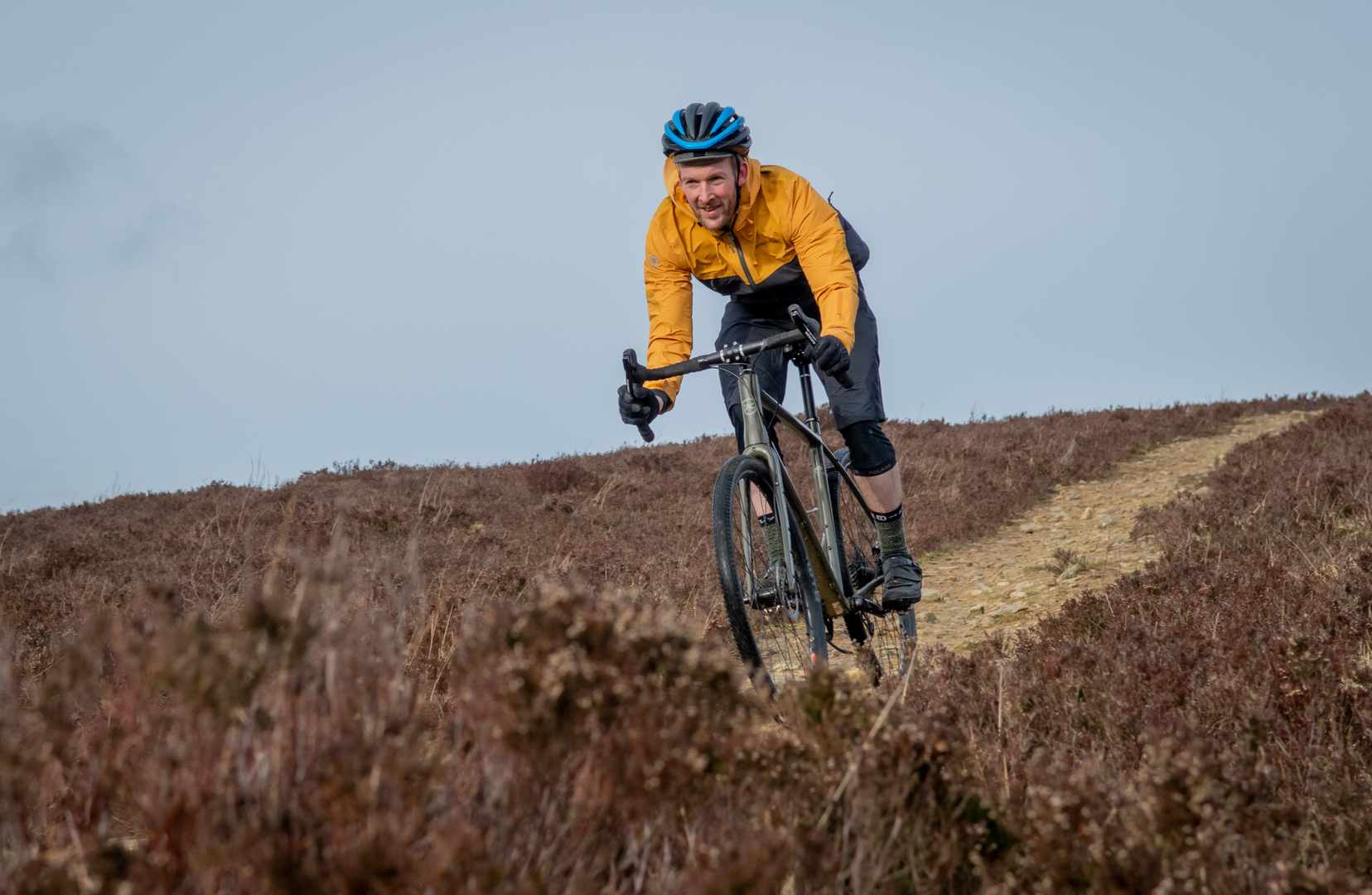
It’s also surprisingly comfortable for an aluminium frame. Whether this is due to alloy alchemy or those generous tyres is hard to tell. But there’s very little of the harshness that I’ve experienced with some aluminium or even carbon frames which, to put it bluntly, owe their turn of speed to repeatedly kicking you up the arse. For really long rides I’d probably swap the WTB Volt saddle for something a little more to my preference, but even in its stock configuration, I could tackle rough rutted descents or ribbons of Calderdale cobbles without feeling like my vertebrae were fusing together. I didn’t get the chance to test the Libre AL fully loaded with luggage for an long-distance trip, although it did accept a rack and panniers with no issues whatsoever, as you’d expect. But it seems like the sort of bike that would play well with long laden mileages.
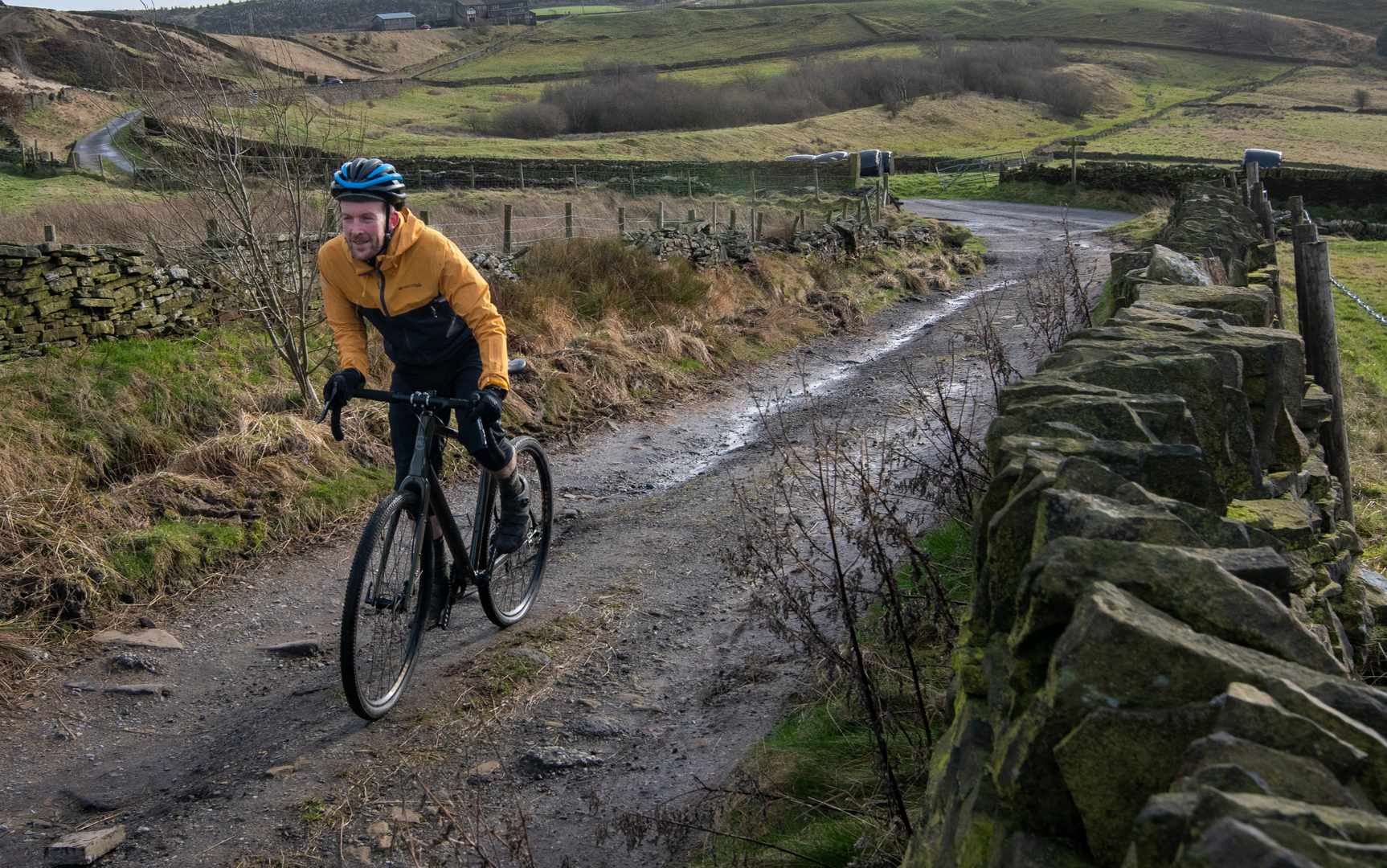
The Libre AL’s stock, summer gravel tyres flatter the speed of the bike but something grippier would have been welcome, bearing in mind that it’s a Europe-only model, and was launched just as autumn started to turn into winter. The semi-slick Riddlers have plenty of grip until you hit a fast, straight muddy or grassy section, at which point you’re basically surfing and praying. To give full disclosure, I did actually swap them for my preferred winter tyres, a set of WTB Resolutes, for most of the test, and felt less nervous afterwards. If you generally ride on hardpack surfaces you’ll be fine with the stock tyres, and when run tubeless they can still muster up the necessary traction under most circumstances. WTB have also just released a grippier sibling to the Riddler, appropriately dubbed the Raddler, which might allow gung-go descending on a wider variety of surfaces.
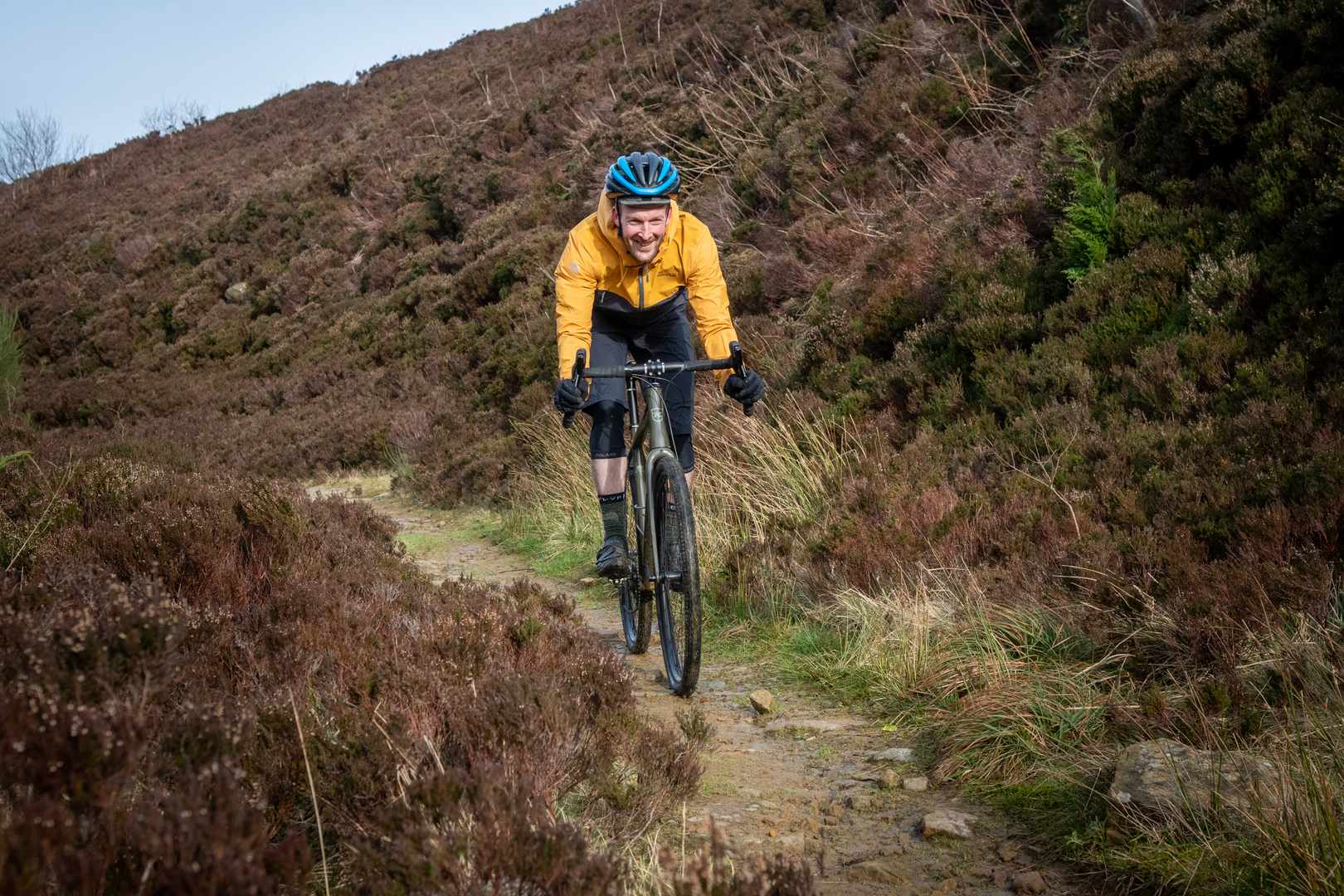
The TRP Spyre brakes were another part of the build that I didn’t get on with. Their twin piston design offers some of the best feel and control of any mechanical brakes, but it’s not in the same league as SRAM Apex hydraulic discs, which allow one-finger braking from the hoods. I also experienced a complete loss of braking power over the course of one short, wet ride, which no amount of barrel adjuster twiddling could cure. It was possible to fix this by adjusting the inner pad, but doing this without removing the rear wheel is all but impossible due to restricted access thanks to the monster cassette. Just for added annoyance, when the brakes faded, the gear lever tended to jam against the flared handlebar. That said, the second set of pads have lasted much better and I’m only just starting to get a recurrence of the same problem.
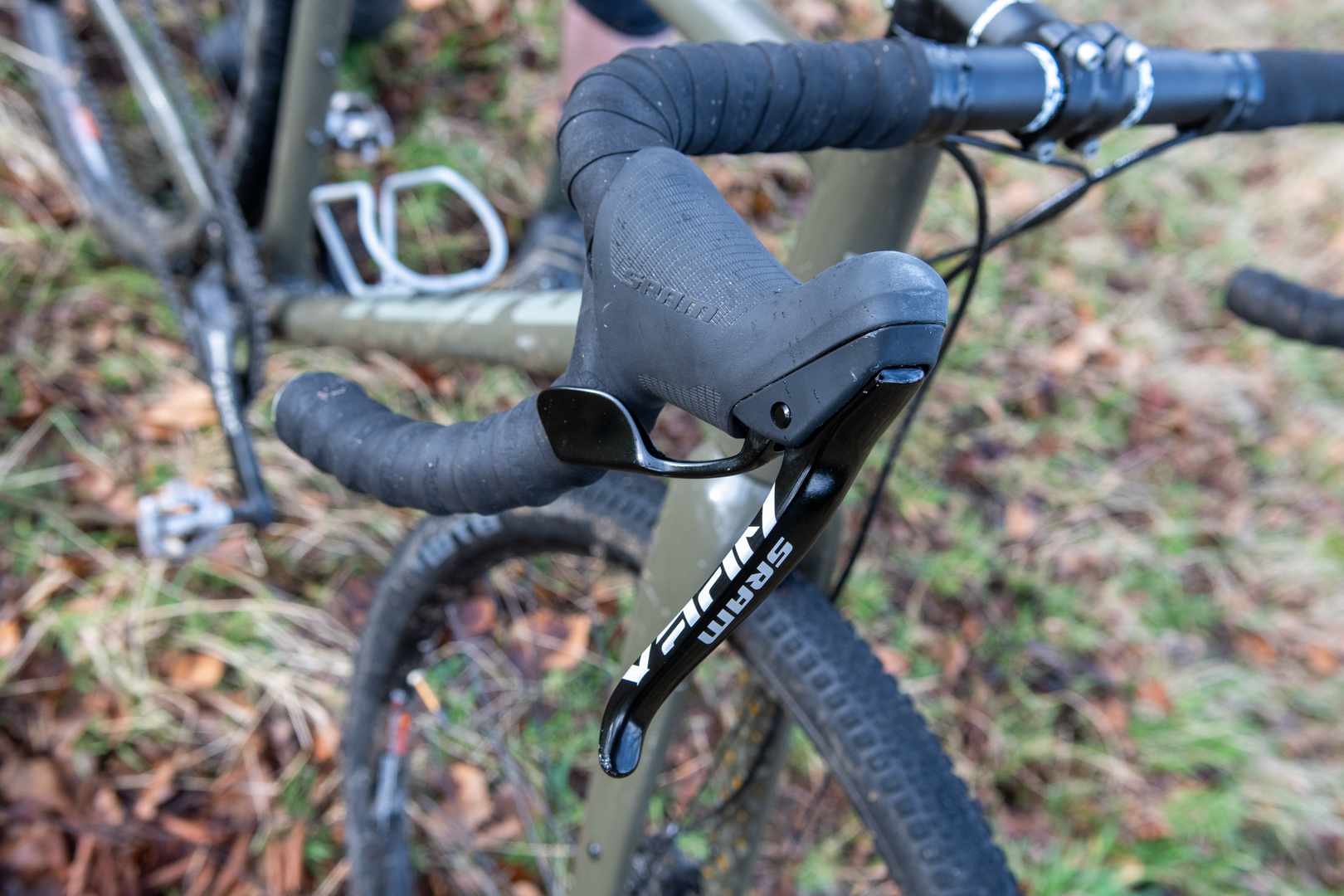
Durability issues
Apart from the issues with the brakes, my time with the Libre AL was generally hassle-free. It lost a plastic cable clip from the underside of the chainstay but everything else runs as well as the day it arrived. The brakes were much more reliable once I’d changed the stock pads, but they still need you to keep an eye on them and tweak them every few rides.
Three things we loved
- It’s a versatile bike that could tour, bikepack or race equally well.
- It’s more comfortable than a mid-range alloy frame should be.
- Wide flared bars are still a nice surprise on a complete bike.
Three things we’d change
- The mechanical brakes aren’t as dependable as they ought to be.
- More aggressive tyres would cost a tiny bit of speed, but improve the Libre’s capabilities on natural trails.
- The triple bolt mounts aren’t compatible with some widely-used cargo cages.
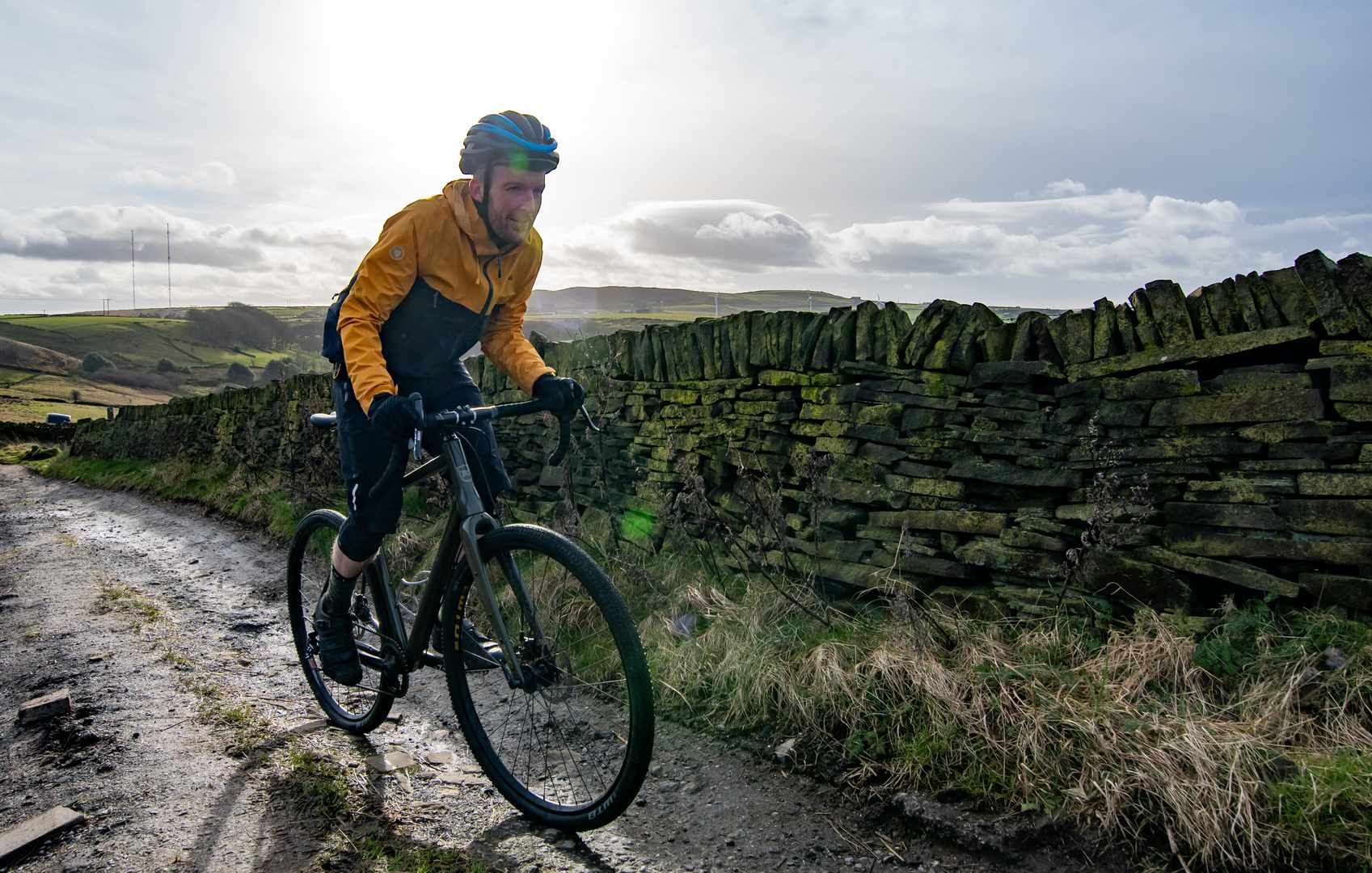
Overall
The Libre AL is an understated bike, possibly too understated for its own good. Kona’s lineup already includes a grab bag of gravel bikes but the Libre AL is definitely filling a niche in the range. It just lacks a certain something to make it stand out from the crowd.
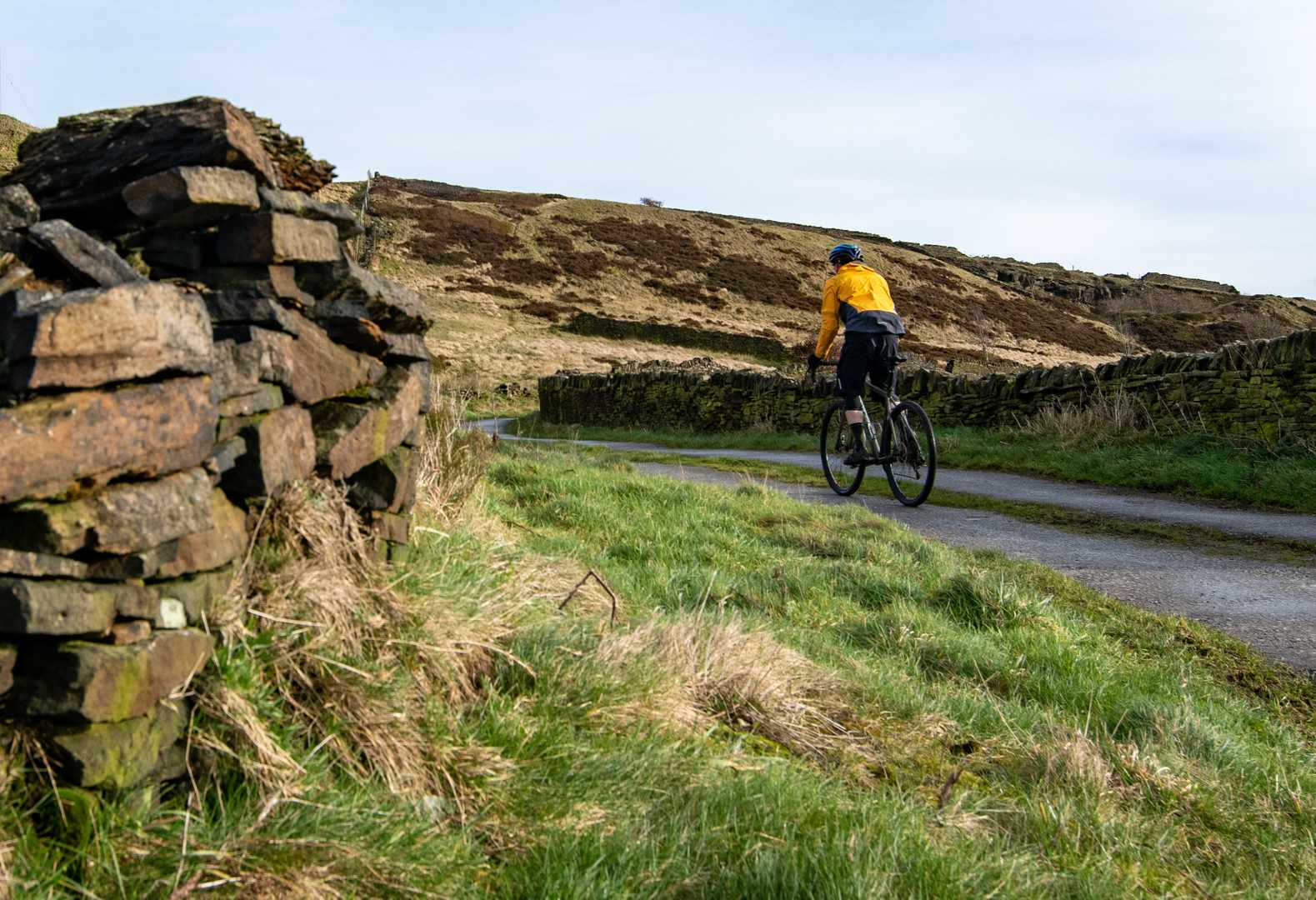
It also suffers from a mediocre spec sheet for its price. The budget seems to have been used up on the frame and wheelset, which aren’t instant selling points. There are plenty of bikes nearer the £1k mark which are much better value on paper, even though they might not be as pleasant to ride, or have the Libre’s versatility. The cable/mechanical disc brakes in particular are a weak point, and they would also be a costly upgrade if you decided you wanted to replace them with full hydraulics as you’d need to replace the levers as well.
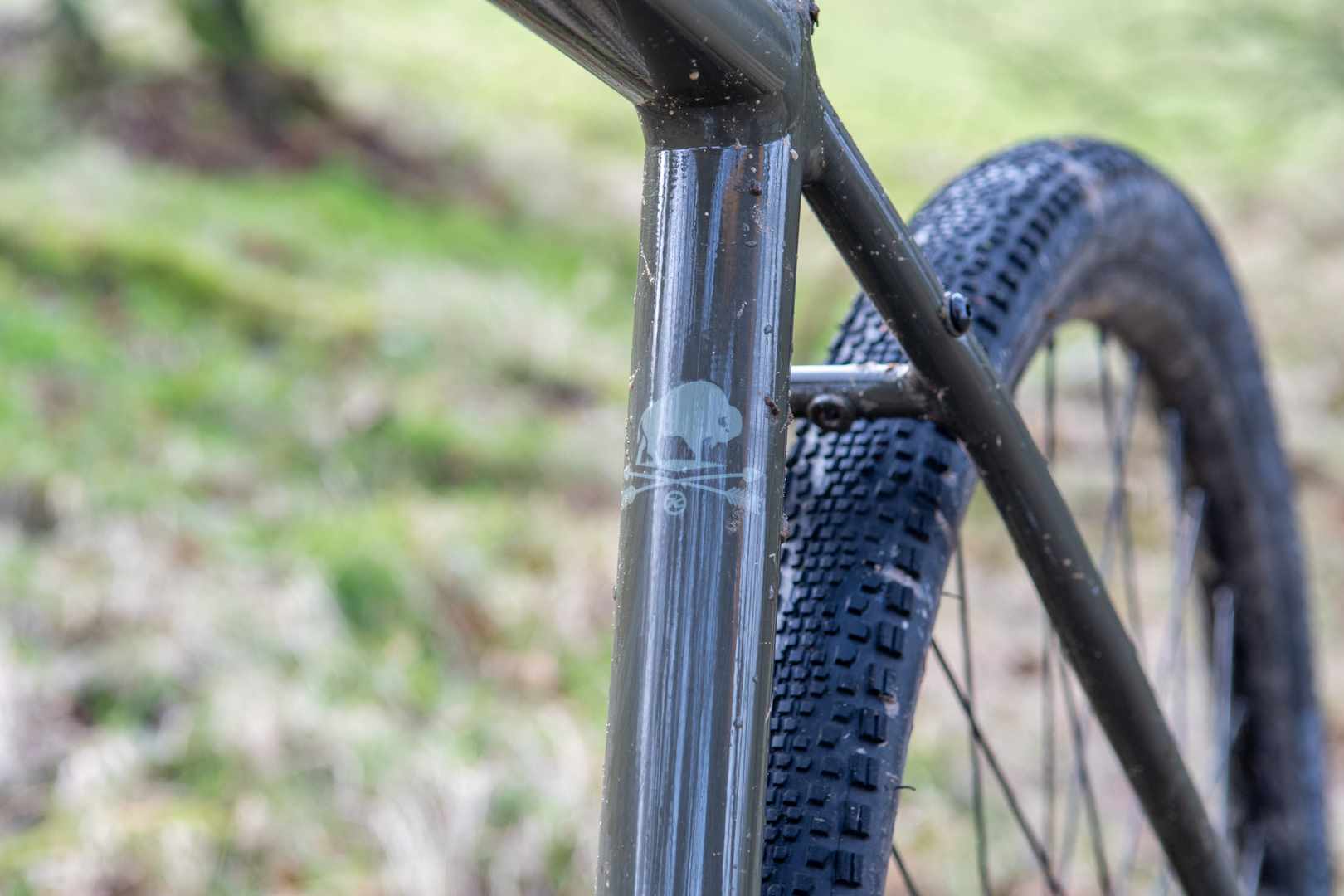
It’s a shame that the Libre AL is let down by this very visible element of its componentry, as in nearly every other respect it’s a great bike. Compared to its carbon-framed counterparts up the range, it’s much more affordable, but there are bikes that cost a third less which have very similar build kits. However if you dislike hydraulic brakes, want to attach your luggage with bolts not straps, and fancy a bike that’s built for comfort and speed, the Libre AL is still worth a look.
Kona Libre AL specification
- Frame // Kona 6061 Aluminium Butted
- Fork // Kona Verso Full Carbon Flat Mount Disc
- Wheels // WTB KOM Light Team i25 TCS rims, Formula hubs
- Tyres // WTB Riddler TCS 700x45c
- Chainset // SRAM Apex 1x, 40t
- Cassette // SRAM PG1130 11-42t 11spd
- Rear Derailleur // SRAM Apex
- Shifters // SRAM Apex
- Brake Calipers // TRP Spyre C, 160mm rotors
- Handlebar // Kona Road
- Stem // Kona Road
- Seatpost // Kona Thumb, 31.6mm
- Saddle // WTB Volt Comp
- Weight // 22.6 lbs/10.2 kg
- From // www.konaworld.com
Comments (6)
Leave Reply
Post Comment

How much is it?
RRP £1799. Agree with the review, looks under/wrongly specced at that price.
Yep Sonder Camino Ti for £100 more with mechanical Apex spec, £2,149 with hydro Apex. I’d rather have a Ti frame. Wheels possibly not comparable to the WTBs on the Kona but think I could live with them for the hydro kit. If you go for the Al Camino you get the hydro Apex for £1199, GRX 1x (my choice) for £1299.
The pricing just seems bizarre. Have they really not looked at the competition? It’s not even just the direct companies like Sonder and Ribble who have much better pricing. The Specialized Diverge with hydraulic brakes is £500 less! Boardman have a fully hydraulic Apex equipped bike for £800 less!! Kona aren’t some boutique brand that people would be happy to pay extra for are they?
Hmm, similar to my Sonder Camino AL, but £500 more for mechanical not GRX Hydraulic? No thanks…
I’ve not ridden the Ribble or the Camino, but it’s not really accurate to say that if you bought one of them you’d be getting the same bike with a better spec for less money.
Aside from the frame, there are differences on the spec sheets that will affect how the bikes ride: things like tyres (the Camino comes with OEM wire beads, bars (the Ribble has generic drops), and wheels (wide rims versus narrow rims really make a difference to grip IME).
In fairness you’d have plenty of leftover cash to spend on upgrades, but you might not want to spend your life souping up your bike, and might just want to buy one that feels right from the off. IMO Kona haven’t quite hit the mark here, bit that definitely seems to be their target market.